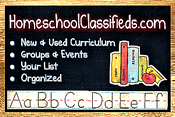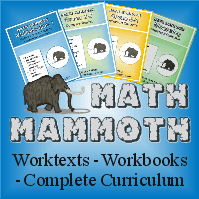Many times I hear that people are struggling using SWR or that it just didn’t work for their student. Unfortunately, many times this occurs when the teacher does not have a clear picture of what SWR is all about. I am hoping I can help.
SWR, an immersion program, has three main components: Phonograms, Spelling Rules, and Spelling Lists. Mastery of the phonograms and rules comes as you work through the steps and the WISE Guide preliminaries and spelling lists. It is also important to realize that SWR requires the teacher to understand what the program is trying to accomplish and to be able to teach her child. It is not a program that you can pick up without study, check off boxes, and truly cover the essence of the program.
Preparation for reading can start long before your child is read to read. From infancy you can expose your child to the phonogram sounds whether through an audio recording or your speech. You can also help train his ear that words are made up of sounds by orally ungluing and gluing words. Motor skills can be trained by first working with large movements and then with the small muscles. It doesn’t have to include pencil and paper.
When your student becomes aware that language is an object that can be analyzed and manipulated in different ways, you know the foundation is being laid. Your child will start to recognize that words can be broken into syllables. He will then be able to hear separate sounds of a language, not just the words or the syllables. The goal is that he is able to hear, identify, and manipulate individual sounds in spoken words.
If your student has reached these milestones, you are ready to continue through the SWR steps. These skills are also important to cover with an older student as they might be the very steps that are holding him back. If your student is not ready to write, you can still progress with the material orally. Then you can go back over it using pencil and paper when more maturity is present.
For a more advanced student, you will want at this point to give him the Diagnostic Test found in Appendix B. Don't worry about where he will place. That will be done in Step 11. Just give the test.
Whether you have a non-beginner or a beginner (who you have determined is ready to begin), you now move into teaching how to read and write the first 26 phonograms (and the numbers). An older student is probably going to know how to write the alphabet so you just have to teach the sounds. There is a specific method for teaching the phonograms which is part of why SWR is so successful. You may find it easier working with a mentor to learn the multi-sensory method rather than trying to absorb it from the book.
Having learned the first 26 phonograms, your student is ready for the Learning Log (step 8) and the Vowel/Consonant Reference page (step 9). There are explicit instructions in the red book on how to teach the reference pages. The C/V chart actually accomplishes several things. It teaches 4 rules (#1-4) and introduces the student to the word dictation process and the marking system.
NOTE: There are two types of references pages taught in SWR – Teaching pages (completed all at once) and Collection pages (compiled as you go through the WISE Guide lists). The WISE Guide tells you when to introduce both types. You don't worry about adding to collection pages from the lists until that type of page has been introduced as instructed in the WISE Guide preliminaries. Once a page has been introduced, the WISE Guide will tell you to add certain words from a list to the collection page. (Example: The WISE Guide Preliminaries for Section E instruct us to Start the "SH/TI Page". Then in the body of Section F on the right-hand page (under shot) it says to add "shot" to the SH Page. You will see this all throughout the WISE Guide.)
The Consonant/Vowel Page is a teaching page. The next reference page, Multi-Letter Phonograms, is a collection page. A beginning student will fill it in as the multi-letter phonograms are taught throughout Sections A through I-1. (For a student starting farther into the WISE Guide, this page will be completed in Step 11 before you begin the WISE Guide.)
For a non-beginner, you will now use the test given in Step 4 to correctly place him in the WISE Guide. You want to find the first word missed and then place your student using the Evaluation Table. If you aren't sure which level is correct, ask someone.
After placement has been determined, you are ready to begin daily spelling in the WISE Guide (step 12) using the Learning Log. The red book is no longer your focus. All the lesson plans you need are right in the WISE Guide. You will use the red book for reference to complete the steps as they are assigned in the WISE Guide. One hint on the WISE Guide is that you want to read all the way across the two-page spread and not use it as two separate pages.
The Learning Log is an essential part of SWR. This is where your student is ungluing and gluing words and starting to absorb the spelling rules until both become a part of him. You will teach the rules through the reference pages, and then practice them through the word lists. The student isn't just learning an arbitrary rule but actually has words to apply it to and so it makes more sense. The more words he learns, the more the rules become second nature.
When looking at the top of the 2-page spread of the WISE Guide, the first part is the Preliminaries. These preliminaries can include phonograms to review, phonograms to teach, rules to review, reference pages to review, and reference pages to teach. You will review all the items listed and schedule the best time for covering them during the week. It is probably best to do any new teaching reference pages before dictating the list. (These are the ones you teach all at once.) Collection reference pages and other activities can be covered after dictation or as warm up later in the week. With practice you will recognize when activities will be the most beneficial during the lesson. The key is to not overload the student with too much preliminary work directly before dictating the word list. It is much more effective to dictate a word list when the student is fresh. One thing I do with younger students is to teach a new reference page one day and then dictate words the next.
Once you understand what and when preliminary information needs to be covered during the week, you can proceed to the word list. The dictation process used to teach the word lists is NOT dictation like we use with Charlotte Mason's methods. With SWR, you are teaching your student how to spell each word using a multi-sensory method. There is no guessing. I would highly recommend meeting with a veteran user to learn the word dictation process. It was very helpful for me to see the process modeled and to see how all the senses are used and the importance of each step. From what I have gathered so far, the word list dictation is one of the "DON'T CHANGE" things about SWR. So it is important to make sure you understand how it works.
On a following day(s) after the list dictation, you will want your student to complete one or two WISE Guide enrichments. These might include dictation exercises, prefix/suffix work, early grammar topics, etc. You pick which one(s) fit your student best.
After completing the preliminaries, dictating the word lists, and working on enrichments, you will want to test your child on the words. Your goal is not necessarily a perfect score, although that is great. Your goal is that your child is learning to manipulate words and to apply the spelling rules to them. The more word lists you go through, the more the phonograms and rules will become second-nature allowing your student to apply them to his reading and writing.
I highly recommend making your own teacher learning log to help you learn how SWR works. You do this by going through the WISE Guide preliminaries and lists and completing all the parts that your student will be doing. When I did mine, I covered the right-hand page until I had completed marking my words. Then I checked my syllable breaks and markings. This is a great way to obtain an overview of what SWR is trying to accomplish. You will have many lightbulb moments as you create the reference charts and mark the words in your learning log.
The best thing to do is to step away from the big picture and take it in bite-size pieces. I know how hard that is as I am a major big picture person, but it does work. Give yourself time to process it all. Feel free to ask for clarification on anything. It is a method worth learning.











2 comments:
You did a great job explaining this program. I was first introduced at a LA co-op I did a few years ago. I loved it so much I bought the books to continue working on it at home. This is what I have used for all my boys.
Thanks, Berry Patch. It took me several years before things clicked but now it is so simple.
Post a Comment